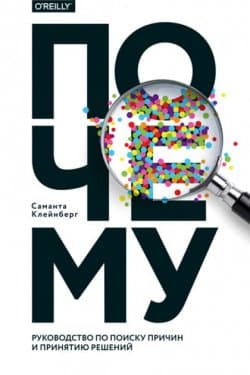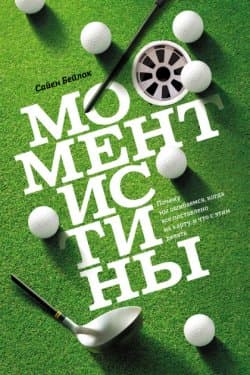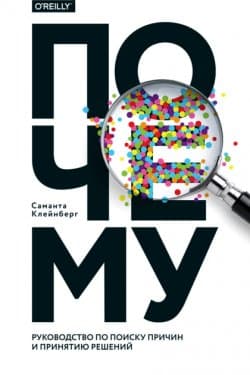Почему - Саманта Клейнберг (2017)
-
Год:2017
-
Название:Почему
-
Автор:
-
Жанр:
-
Язык:Русский
-
Страниц:160
-
Рейтинг:
-
Ваша оценка:
Автор показывает, что такое причинно-следственная связь, поясняет, почему в ее определении мы часто ошибаемся, как можно принимать верные решения. Благодаря этой книге вы научитесь анализировать информацию, выявлять причинно-следственные связи, объединять прошлое, предсказывать будущее.
Книга будет интересна философам, аналитикам, экономистам, медикам, юристам, начинающим ученым.
Почему - Саманта Клейнберг читать онлайн бесплатно полную версию книги
Cook, N. R. and Ridker, P. M. (2014). Response to Comment on the Reports of Overestimation of ASCVD Risk Using the 2013 AHA/ACC Risk Equation. Circulation, 129(2): 268–269.
Cooke, P. (2009). Clarifications and corrections to ‘On the attribution of probabilities to the causes of disease’ by Peter Cooke and Arianna Cowling (Law, Probability and Risk (2005), 4, 251–256). Law, Probability & Risk, 8: 67–68.
Cooke, P. and Cowling, A. (2006). On the attribution of probabilities to the causes of disease. Law, Probability & Risk, 4(4): 251–256.
Cooper, G. F. (1999). An Overview of the Representation and Discovery of Causal Relationships Using Bayesian Networks. In C. Glymour and G. F. Cooper (eds.), Computation, Causation, and Discovery, pp. 3–62. AAAI Press and MIT Press, Cambridge, MA.
Cooper, G. F. and Herskovits, E. (1992). A Bayesian Method for the Induction of Probabilistic Networks from Data. Machine Learning, 9(4): 309–347.
Corrao, G., Rubbiati, L., Bagnardi, V., Zambon, A., and Poikolainen, K. (2000). Alcohol and coronary heart disease: A meta-analysis. Addiction, 95(10): 1505–1523.
Craig, P., Dieppe, P., Macintyre, S., Michie, S., Nazareth, I., and Petticrew, M. (2008). Developing and evaluating complex interventions: The new Medical Research Council guidance. BMJ, 337: a1655.
Crofton, J. (2006). The MRC randomized trial of streptomycin and its legacy: A view from the clinical front line. Journal of the Royal Society of Medicine, 99(10): 531–534.
Cushing, J. T. (1998). Philosophical Concepts in Physics. Cambridge University Press, Cambridge.
Cushman, F. (2008). Crime and punishment: Distinguishing the roles of causal and intentional analyses in moral judgment. Cognition, 108(2): 353–380.
Dalakas, M. C. (1995). Post-Polio Syndrome As an Evolved Clinical Entity. Annals of the New York Academy of Sciences, 753: 68–80.
Damisch, L., Stoberock, B., and Mussweiler, T. (2010). Keep Your Fingers Crossed! How Superstition Improves Performance. Psychological Science, 21(7): 1014–1020.
Danks, D. (2005). The Supposed Competition Between Theories of Human Causal Inference. Philosophical Psychology, 18(2): 259–272.
Dash, D., Voortman, M., and De Jongh, M. (2013). Sequences of mechanisms for causal reasoning in artificial intelligence. In Proceedings of the Twenty-Third International Joint Conference on Artificial Intelligence.
David, L., Seinfeld, J., and Goldman, M. (writers) and Cherones, T. (director). (1991). The stranded [Television series episode]. In David, L. (producer), Seinfeld. CBS, Los Angeles.
DeMaio, P. (2009). Bike-sharing: History, Impacts, Models of Provision, and Future. Journal of Public Transportation, 12(4): 41–56.
Devine, D. J., Clayton, L. D., Dunford, B. B., Seying, R., and Pryce, J. (2001). Jury decision making: 45 years of empirical research on deliberating groups. Psychology, Public Policy, and Law, 7(3): 622–727.
Diamond, S. S. and Rose, M. R. (2005). Real Juries. Annual Review of Law and Social Science, 1: 255–284.
Diamond, S. S., Vidmar, N., Rose, M., Ellis, L., and Murphy, B. (2003). Juror Discussions during Civil Trials: Studying an Arizona Innovation. Arizona Law Review, 45: 1–83.
Dickey, D. A. and Fuller, W. A. (1981). Likelihood Ratio Statistics for Autoregressive Time Series with a Unit Root. Econometrica, 49(4): 1057–1072.
Downs, J. S., Wisdom, J., Wansink, B., and Loewenstein, G. (2013). Supplementing Menu Labeling With Calorie Recommendations to Test for Facilitation Effects. American Journal of Public Health, 103(9): 1604–1609.
Drummond, C. (2009). Replicability is not Reproducibility: Nor is it Good Science. In Proceedings of the Evaluation Methods for Machine Learning Workshop at the 26th ICML.
DuHigg, C. (2012). Psst, You in Aisle 5. The New York Times Magazine, February: p. MM30.
 Почему они не работают? Новый взгляд на мотивацию сотрудников Сьюзен Фаулер
Почему они не работают? Новый взгляд на мотивацию сотрудников Сьюзен Фаулер
 Королевство Аманда Стивенс
Королевство Аманда Стивенс
 Почему Саманта Клейнберг
Почему Саманта Клейнберг
 Момент истины. Почему мы ошибаемся, когда все поставлено на карту, и что с этим делать? Сайен Бейлок
Момент истины. Почему мы ошибаемся, когда все поставлено на карту, и что с этим делать? Сайен Бейлок
 Почему. Руководство по поиску причин и принятию решений Саманта Клейнберг
Почему. Руководство по поиску причин и принятию решений Саманта Клейнберг
 Здравый смысл врет. Почему не надо слушать свой внутренний голос Уоттс Дункан
Здравый смысл врет. Почему не надо слушать свой внутренний голос Уоттс Дункан

 Пир теней
Пир теней  Князь во все времена
Князь во все времена  Когда порвется нить
Когда порвется нить  Пока я здесь
Пока я здесь 



